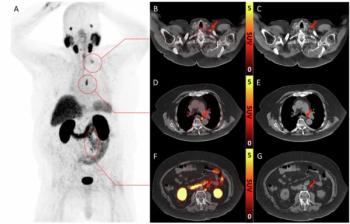
T1 Mapping with Cardiovascular MRI Detects Fabry Disease, Heart Damage
A new technique, quantitative T1 mapping with cardiovascular MRI, can help clinicians detect Fabry disease and the severity of heart damage.
T1 mapping can help detect Fabry disease (FD) and the severity of resulting heart damage, earlier than other types of MRI, according to an article in
"Heart disease is the number one cause of death for patients with Fabry disease. The earlier the disease can be pinpointed, the sooner treatment can start,” co-author Gavin Y. Oudit, MD, PhD, said in a release. “The treatment for the disease halts the condition and prevents serious damage to the heart."
In an effort to improve current imaging evaluations of the heart for these patients, researchers from the Alberta Heart Institute at the University of Alberta in Edmonton, Canada, developed a new technique: quantitative T1 mapping with cardiovascular MRI. They, then, undertook a small study to assess its potential as a disease-specific imaging biomarker.
A total of 75 subjects participated in the study: 31 patients with FD, 23 controls, and 21 subjects with concentric remodeling or hypertrophy. All participants underwent cardiovascular MRI to measure left ventricular (LV) morphology, function, delayed enhancement, as well as myocardial T1 values, and derived parameters (extracellular volume).
Results showed that all had LV ejection fraction greater than 50 percent and similar volumes. FD and concentric remodeling or hypertrophy had similarly increased mass, wall thickness, and mass/volume as compared with controls.
Of the 31 patients with FD, 16 had LV hypertrophy, as did 10 of the 21 with concentric remodeling or hypertrophy. The researchers found that non-contrast myocardial T1 values were substantially lower in the patients with FD as compared with the controls and those with concentric remodeling or hypertrophy, but extracellular volume was similar in all groups
Women had lower LV mass and wall thickness, longer myocardial T1 values, and larger extracellular volume suggesting a key sex difference in cardiac remodeling.
"This test can uniquely identify Fabry disease by detecting microscopic changes in the heart muscle structure that are not visible on regular images," co-author Richard B. Thompson, PhD, said. "Fabry disease can look like other diseases if you only look at the whole heart structure or function, but this T1 mapping test, that can detect the tiniest changes in the heart, could identify all the patients with Fabry disease."
Newsletter
Stay at the forefront of radiology with the Diagnostic Imaging newsletter, delivering the latest news, clinical insights, and imaging advancements for today’s radiologists.

























